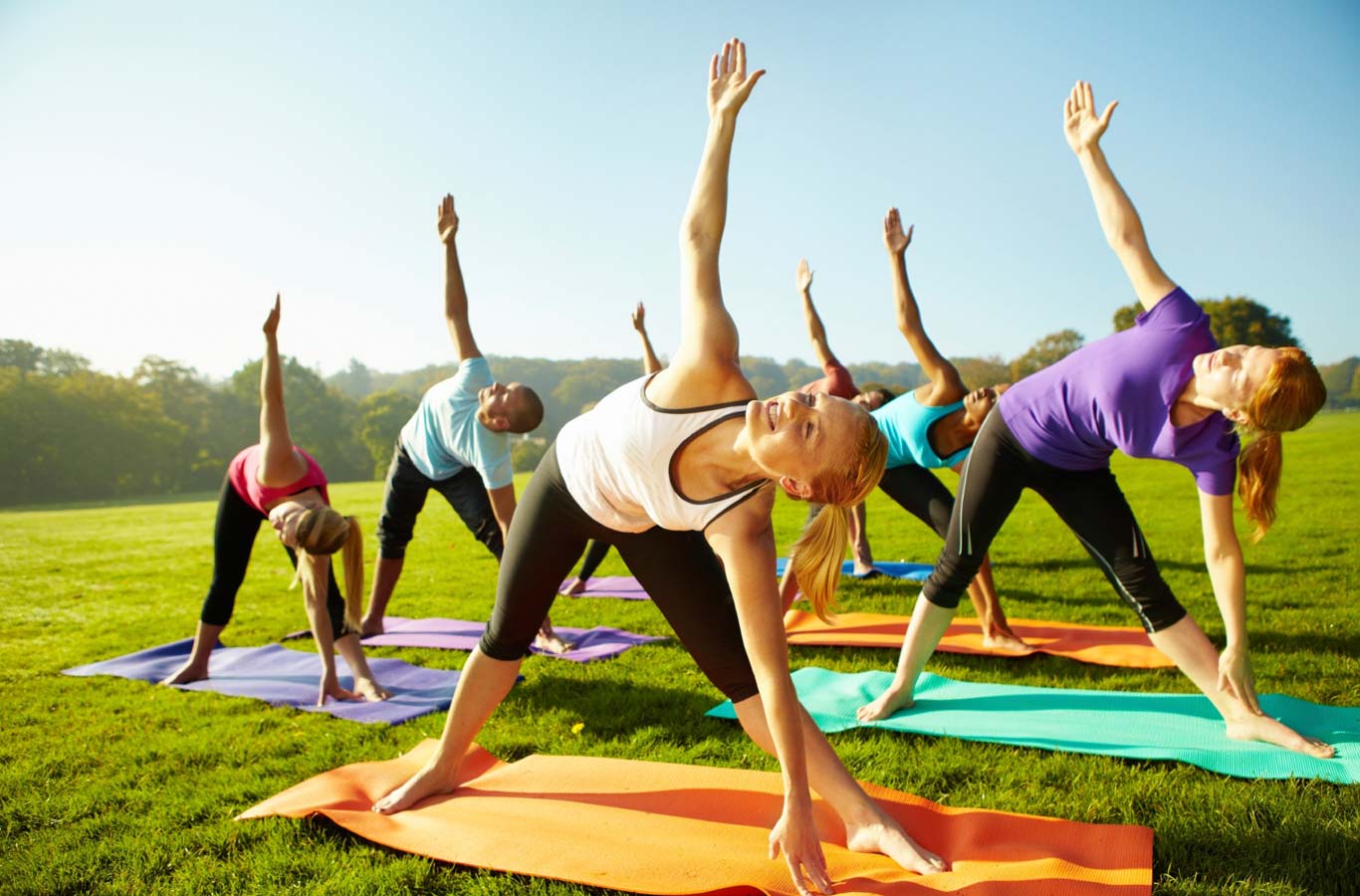Yoga might not be the first thing that pops to mind when you think “outdoor sports,” but the activities need not be mutually exclusive. For dedicated runners, bikers and climbers who put their muscles through a lot of punishment, yoga’s physical and mental poses can help prevent injuries and improve recovery and performance.
It’s a fact that more and more athletes are seeing first-hand the benefits of yoga in a number of expected, and unexpected, ways. One place where the crossover is in full effect is at Yoga Six in St. Louis, which teaches a full menu of classes from its location on Oakland Avenue across from Forest Park.
The studio is seeking to further strengthen the connection with outdoor fitness enthusiasts by hosting the Yoga Six 6k Run at 6 p.m. on June 6. The event will include stretching before and after the run, which will begin at the Upper Muny Parking Lot in Forest Park, as well as live music and activities afterward. Get the details here: www.facebook.com/events/1414554218818814/
To mark the occasion and learn more about how yoga can change health and performance, we spoke with Dr. Cindy Haines, who is adjunct faculty at St. Louis University School of Medicine and is also an instructor at Yoga Six. Keeping with the “six” theme, she gave us six ways that yoga can improve the life of the outdoor athlete.
1. Yoga varies your workout for interest and injury-free sporting.
“Enthusiasts, in general, can find that a good thing is enhanced by doing more of a good thing,” said Dr. Haines. But too much of a good thing can be…not so good. “Bringing yoga into the mix can help by using and strengthening new muscles that can provide protection and balance.” And, of course, yoga is not just a physical practice, but also mental. “Yoga will help you understand your body better,” said Dr. Haines, “and give you another focus, so that you’re not burning out.”
2. Yoga enhances your strength training.
“A lot of time, when people think about yoga, they think about mindfulness and stretching, and it has those components to it, but strength is also a main component,” said Dr. Haines. “I mean, have you seen a yogi’s muscles?” Yoga is ideal for enhancing strength and endurance training for the upper and lower body and core. “Even poses and postures that don’t seem to be obvious strength exercises, in fact, are,” said Dr. Haines.
3. Yoga builds your endurance.
“The mind usually gives out before the body. Yoga can help with that,” said Dr. Haines. The mindful, spiritual aspect of yoga is a key point here. “Yoga is a moving and breathing meditation that can help focus one in the here and now. It can teach you to endure and push through something that is uncomfortable,” said Dr. Haines. “Yoga can help develop that mindfulness, help you focus, and teach you to ride out waves of sensation rather than giving up.”
4. Yoga enhances your flexibility.
One of the things that is beyond our control is the passage of time, but we can do something about the effects of aging. “Specifically, with age, we tend to become less flexible,” said Dr. Haines. “Yoga is a tool we can use to circumvent that—working on muscles and the way we approach resistance, physical or mental, internal or external.” Rather than let rigidity overtake us, yoga can help us to create more malleability. “When we change the framework of who we are and how our body responds, we create flexibility in ourselves,” said Dr. Haines. “Flexibility equals less risk of injury, and is more fun on the dance floor.”
5. Yoga helps you breathe better.
“The first thing that comes to mind is the notion of breathwork in running, but it can really benefit any sport,” said Dr. Haines. “It’s really kind of magical. Turn your attention to what your breath is doing and your performance can excel. How many strides per inhale/exhale can completely transform the experience and the movement of running.” Yoga helps the athlete link breath to motion and can help link the cycles of your breath to the cycles of the body. “Yoga also teaches a skillfulness to breathing with an open mouth or closed lips, and how to release excess heat and tension,” said Dr. Haines. “These techniques can deepen that connection between spirit and body and can be very useful for athletes.”
6. Yoga: Detox to retox.
“In hot yoga, especially, you can really get a good sweat on, and sweat is one of the ways we have to detox our system,” said Dr. Haines. The same as with breathwork, yoga can help the athlete get rid of things that are no longer life enhancing—whether carbon dioxide or the byproducts of food—and make room for things that our bodies need. “Detoxing can be an aha moment: As in ‘I just realized the foods I eat, or the habit I have of not hydrating properly, are patterns that are holding me back,'” said Dr. Haines. “After we detox, we retox. We take in what we need that is life enhancing, having made room for what is new. Take things to the next level – and get ready for the next round of detox!”
Dr. Haines said she became involved in yoga many years ago while “pursuing whole health and what life was all about.” She was fascinated with the idea of finding self-empowered ways to be healthier and happier, making health (not just more health care) more accessible. “I also wanted to make this kind of approach to health more understandable and relatable,” she said. “Yoga is not just a physical practice, though it will definitely help you be healthier, but it will also unlock inner wisdom and how you can understand yourself better, so you know how to more skillfully navigate this world.”
Author: Brad Kovach is the editor of Terrain magazine


Leave A Comment